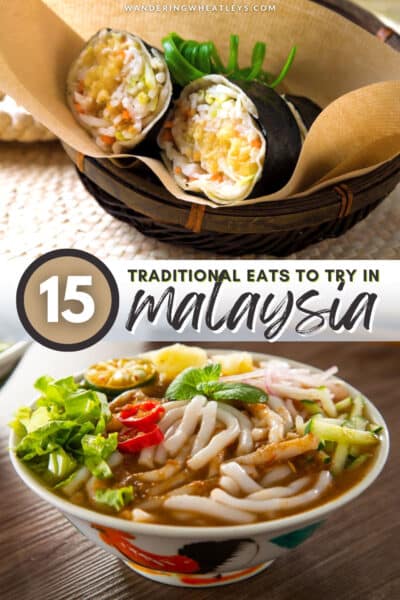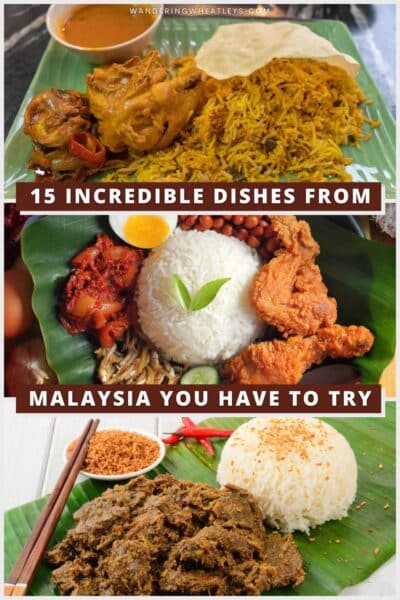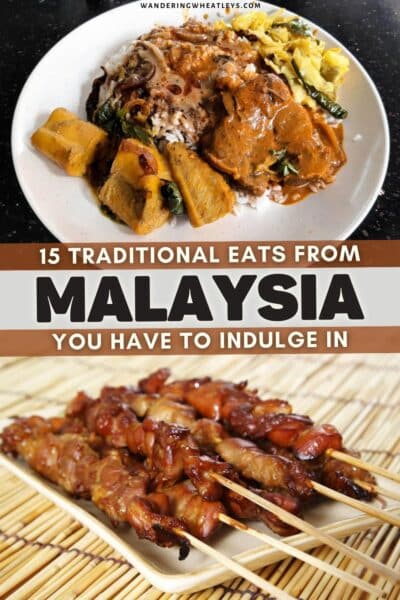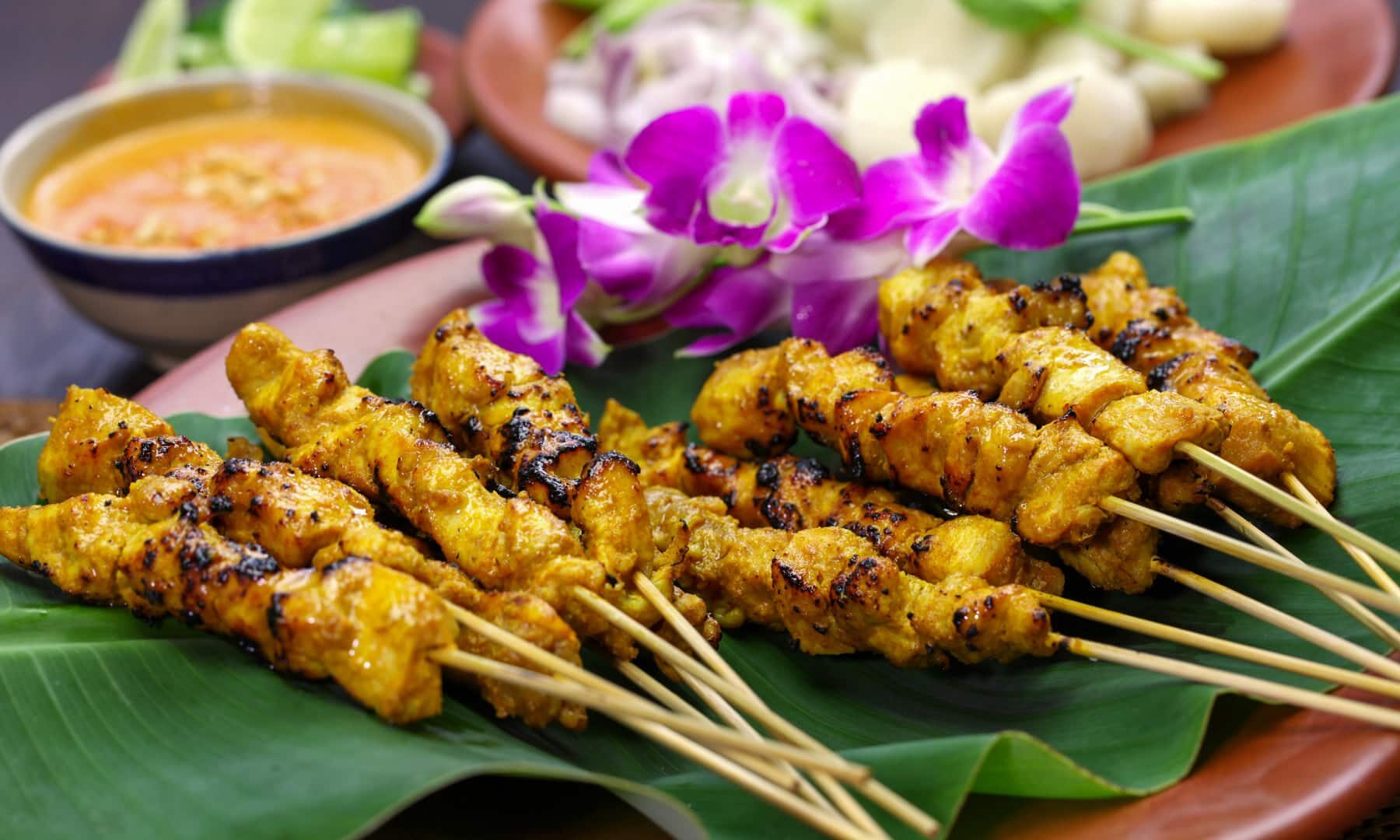Ahh, Malaysian food. Could this Southeast Asian nation be home to the best food in the world? It’s a bold question, and given the fierce competition from neighboring destinations like Thailand, Singapore, and Indonesia, it’s always going to be subjective. Still, after extensive tasting, we know for sure that Malaysia is home to some of our favorite dishes.
Think of Malaysian cuisine and classics like laksa and nasi lemak quickly tempt your taste buds. Malaysian food is heavy on rice and noodles, of course, but with spices as diverse as pandan leaves, tamarind, and turmeric being commonplace in the kitchens, it’s safe to say that no two dishes are the same.
With mixed Malay, Indian, and Chinese influences competing for space, you can start your day with roti canai (bread dipped in curry sauces), enjoy a bowl of char kway teow for lunch (best served by the Chinese hawkers in Penang), and dine on rendang (a traditional Malay dish) for dinner.
No matter where you go in Malaysia, you’ll find regional dishes to die for. Of particular note, of course, is Penang, a veritable food heaven known for its nasi kandar and asam laksa. Ipoh is an underrated culinary destination, while Kuala Lumpur, Johor, Malacca, and even Sarawak are all going to keep you more than well-fed. And everywhere you go, be prepared for a side of spicy sambal sauce to accompany every dish!
If you’re planning a trip to Southeast Asia, then keep reading as we count down the best things to eat in Malaysia.
Disclaimer: This post may contain affiliate links. If you make a purchase or booking through one of our links we may earn a small commission (don’t worry, it’s at no extra cost to you).
15 Traditional Malaysian Dishes to Try
1. Nasi Kandar
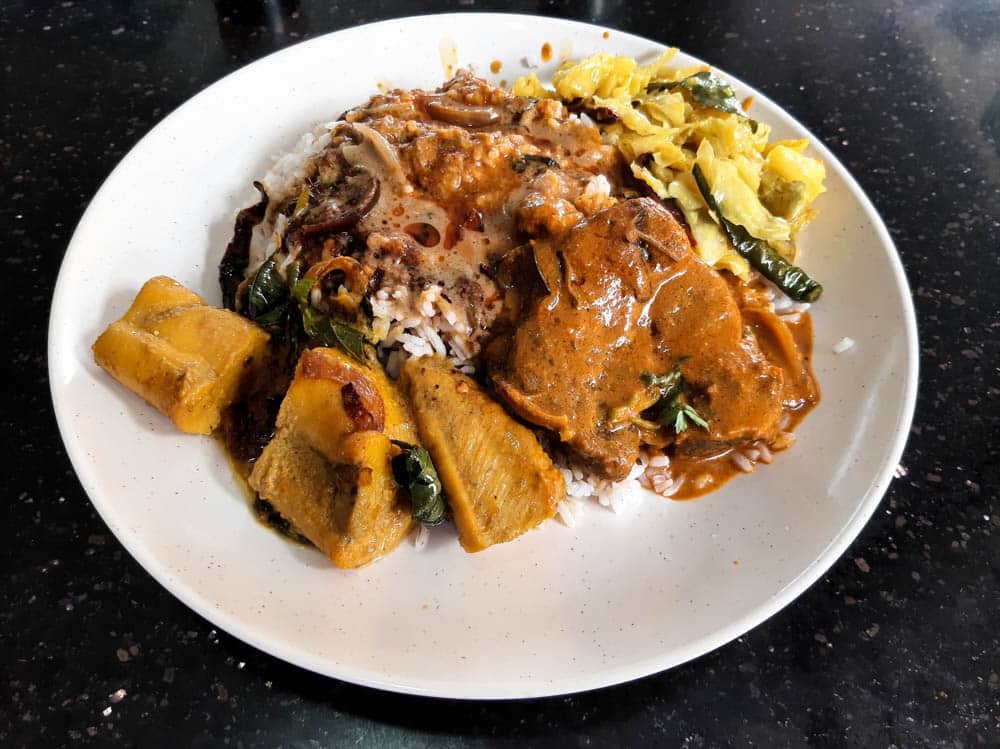
Nasi kandar is one of the best Malaysian dishes, and one of the most filling too! Nasi kandar consists of rice (in Malay, the word “nasi” means rice) and an extensive selection of different curries and side dishes, all of which are served on a single plate.
The number of curries and side dishes you add to your plate depends on your tastes and budget, and you can typically choose from an incredible variety of meat, fish, and vegetable dishes, often topped with eggs, chutneys, or poppadoms. The more curry sauces mixing together on your plate, the better, as nasi kandar is all about the variety!
Nasi kandar originated in Penang, the foodie island in the north of Malaysia, in the early 20th century. It was popularized by Indian immigrant workers, who would prepare big batches of rice and curries to sell around the town.
This is where the second part of the dish’s name comes from. The sellers would walk around with the rice and curries stored in big baskets, balanced on a pole slung over their shoulders, and it’s thought the word “kandar” derives from an Indian word meaning either shoulder or pole, although its exact origins are unclear.
Today, nasi kandar is incredibly popular across Malaysia. It’s no longer sold by hawkers, but rather, you’ll visit a big restaurant and select your dishes buffet-style before paying for everything you’ve chosen. The oldest nasi kandar restaurants are, of course, in Penang, and many would say these are also the best.
2. Nasi Lemak
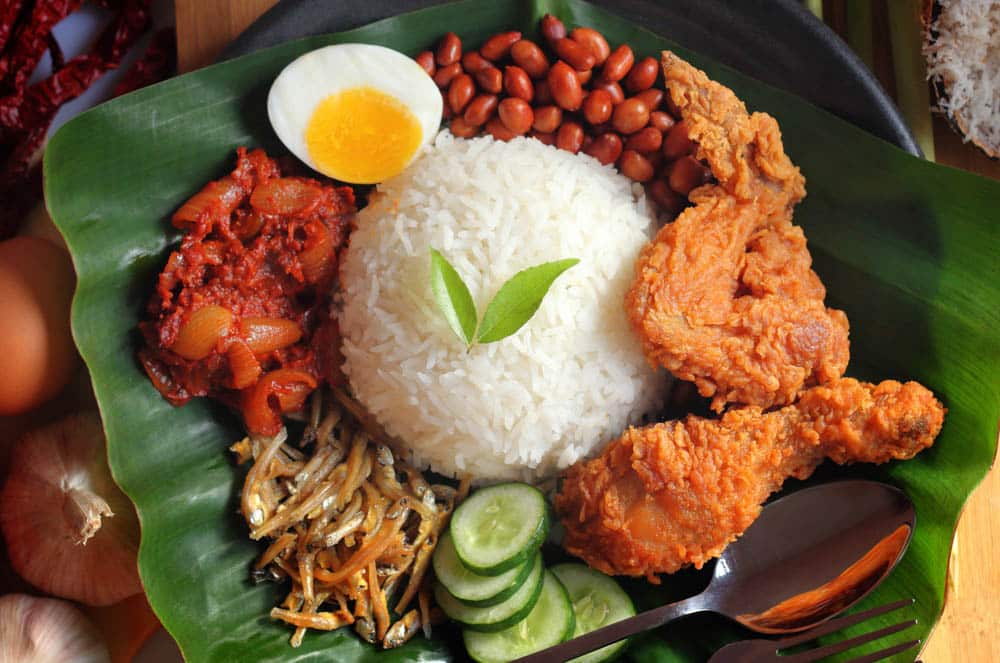
There are many contenders for national dishes of Malaysia, but few tantalize the taste buds so thoroughly as nasi lemak. In mainland Malaysia, nasi lemak is considered the national dish, at least among ethnic Malays, and it’s the heartiest Southeast Asian style breakfast you could ask for.
Nasi lemak is all about coconut rice, which forms the base for the dish. The rice (nasi) is prepared in a coconut cream broth, giving it a hearty, fluffy texture when it’s cooked with pandan leaves. The coconut rice is always served with sambal, the spicy Malaysian sauce that adds a real kick to the dish.
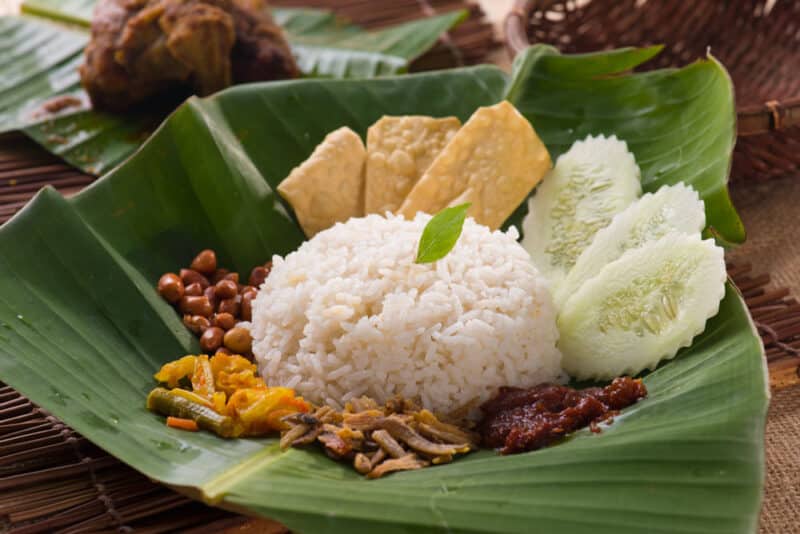
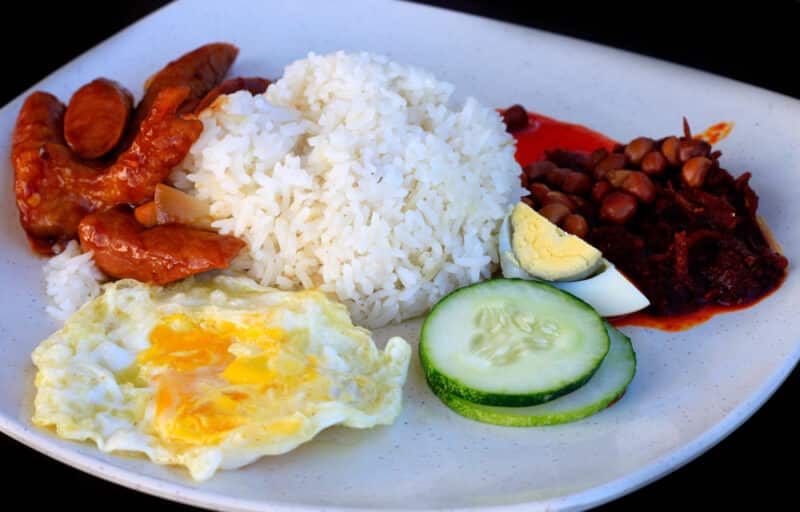
For a lighter breakfast, your spicy coconut rice can then be layered with anchovies, peanuts, and eggs, and it’s often served simply (and in an eco-friendly fashion) wrapped in disposable banana leaves.
For a heartier breakfast, you can often opt to have a chunky piece of fried chicken or even a piece of fried fish added to the nasi lemak. The lighter variants are commonly sold by street hawkers and make for a great fast-food breakfast, while the heavier variants of nasi lemak are more likely to be found in restaurants.
3. Roti Canai
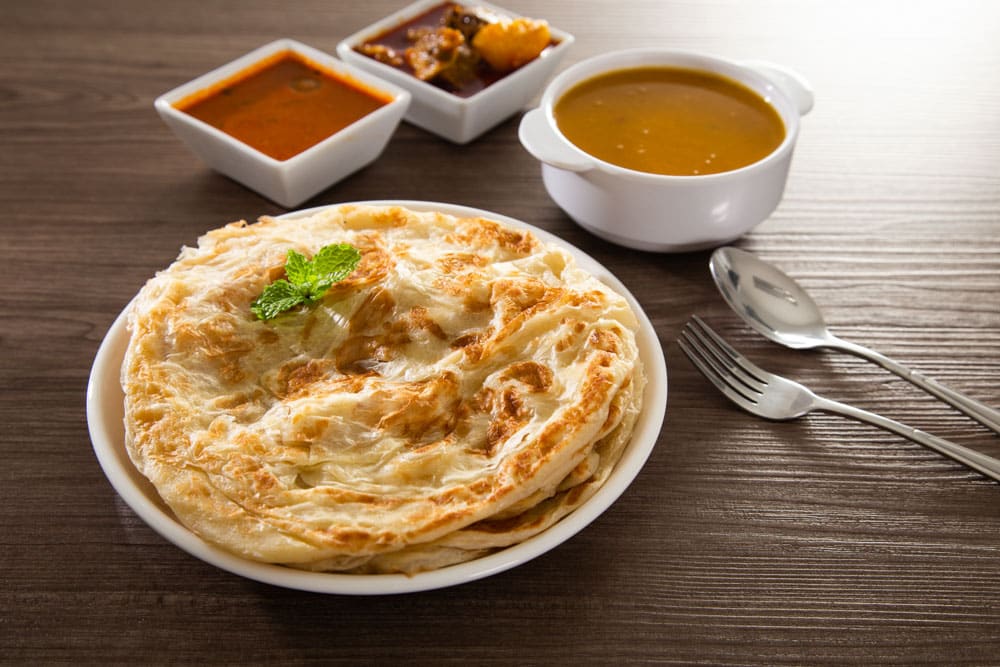
One of the best breakfasts in Malaysia is roti canai, a type of flaky flatbread that’s dipped into delectable curry sauces. Seemingly simple, but marvelously filling, roti canai requires a very specific type of bread that has Indian origins.
The bread in question is, of course, a flatbread, prepared using a mixture of dough and ghee that’s rolled into super thin layers before being tossed on a flat surface. Once cooked, the result is a thin, flaky, and delightful texture that’s to die for.
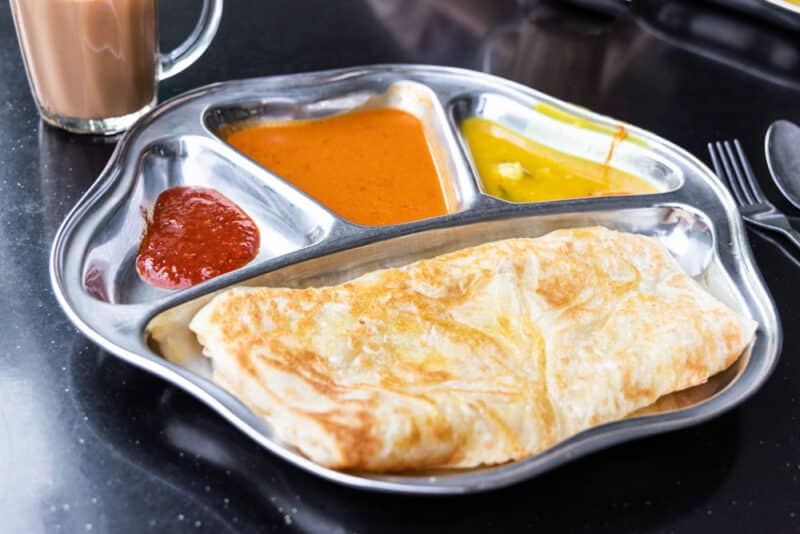
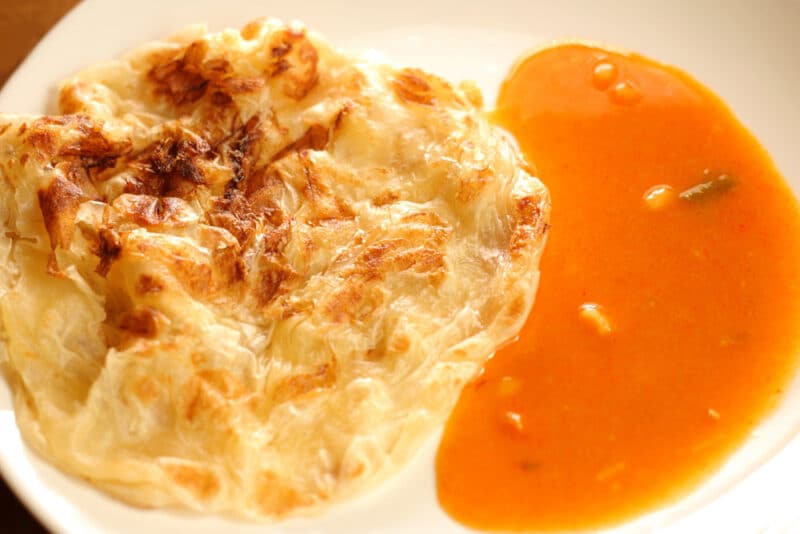
The bread can also be folded over with light toppings like onions, or even eggs, but more commonly, it’s just served plain with a selection of sauces. These sauces vary but are typically curry sauces, including chicken, vegetable, or mutton curries. Vegetarians can opt for the lentil dhal options. You can then take a chunk of the bread and use it to scoop up the sauce.
The best roti canai is often served at the Mamak stalls and restaurants across Malaysia, which have their origins among the country’s Indian communities.
4. Rendang
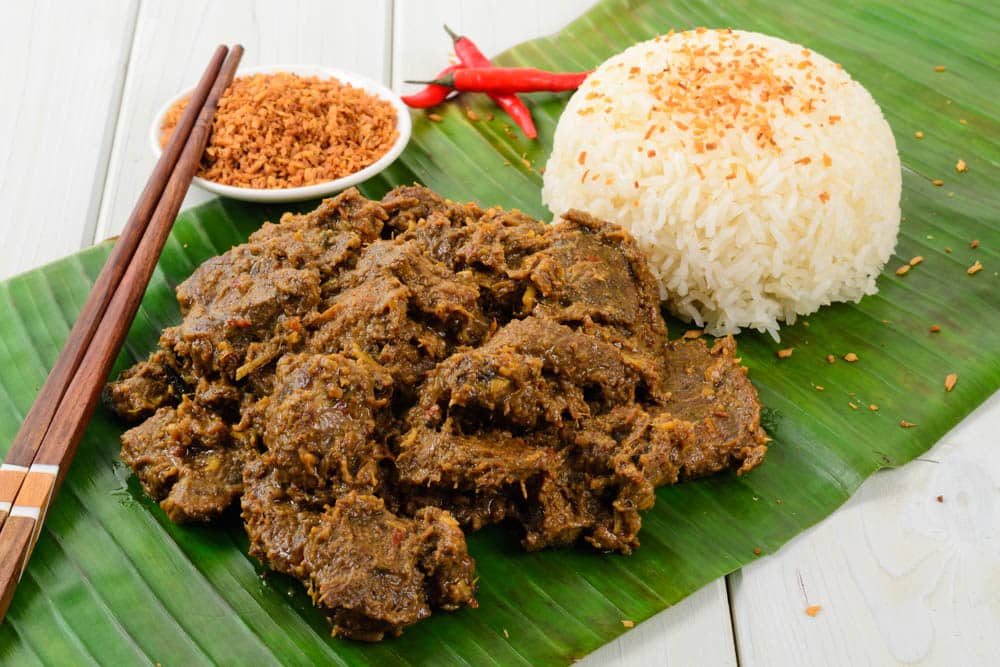
Few dishes fire up the taste buds, and national sentiment, as much as rendang. This is one of the most famous foods in Malaysia (and it’s also incredibly popular in Indonesia, which claims the dish as its own!), and it’s a must-try when you’re eating your way around the country.
Traditionally, rendang was prepared as a ceremonial dish for special occasions. Originating among the Muslim communities of Southeast Asia, rendang is still eaten on occasions like Eid al Fitr. You’ll understand why it’s a “celebratory” dish when you look at the time it takes to prepare rendang.
The best rendang is slow-cooked for hours at a time. You take a cut of meat, such as beef or, less commonly, chicken, and then smother it in coconut milk mixed with a particular set of spices that includes lemongrass, chili, garlic, turmeric, and more. Beef is the preferred meat, as, of course, it slow cooks particularly well.
The result is a sumptuous, soft dish that’s not only especially flavorsome but can be stored for as long as four weeks at a time. Typically, rendang is served with rice and can be either wet or dry in texture, depending on how much of the coconut broth has been evaporated.
5. Laksa
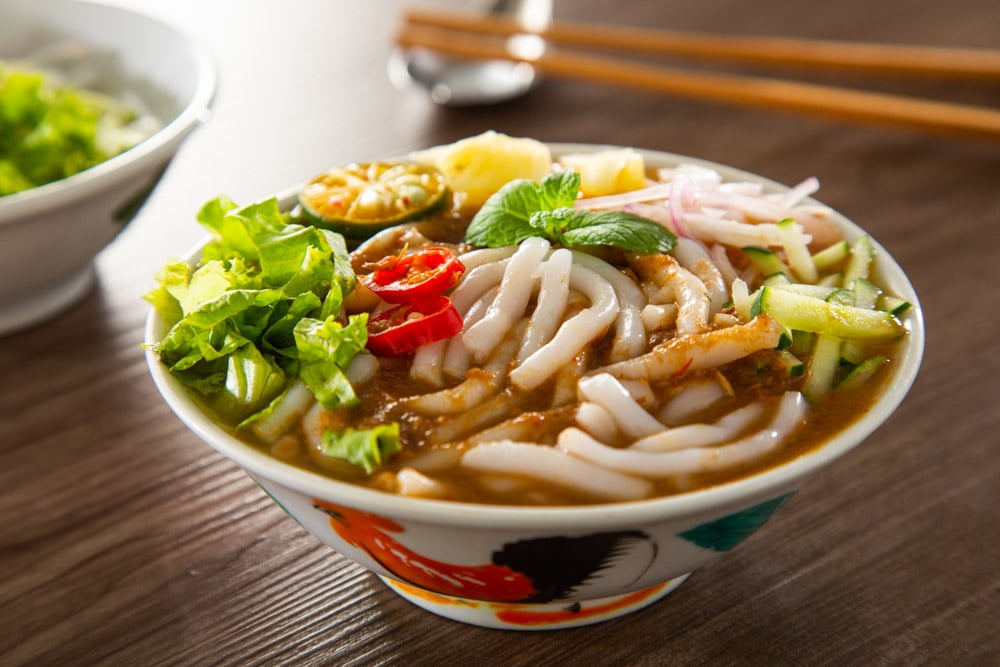
Yet another candidate for the Malaysian national dish is laksa, the original recipe for which is thought to have originated among the Peranakan communities. Travel across Southeast Asia today, though, and you’ll find countless recipes and regional variations of this delectable coconut-based dish, ranging from Singapore laksa to asam laksa.
One of the most famous foods in Malaysia, Laksa is effectively a type of noodle soup. Thick noodles are preferred, although thinner vermicelli is found in some variations.
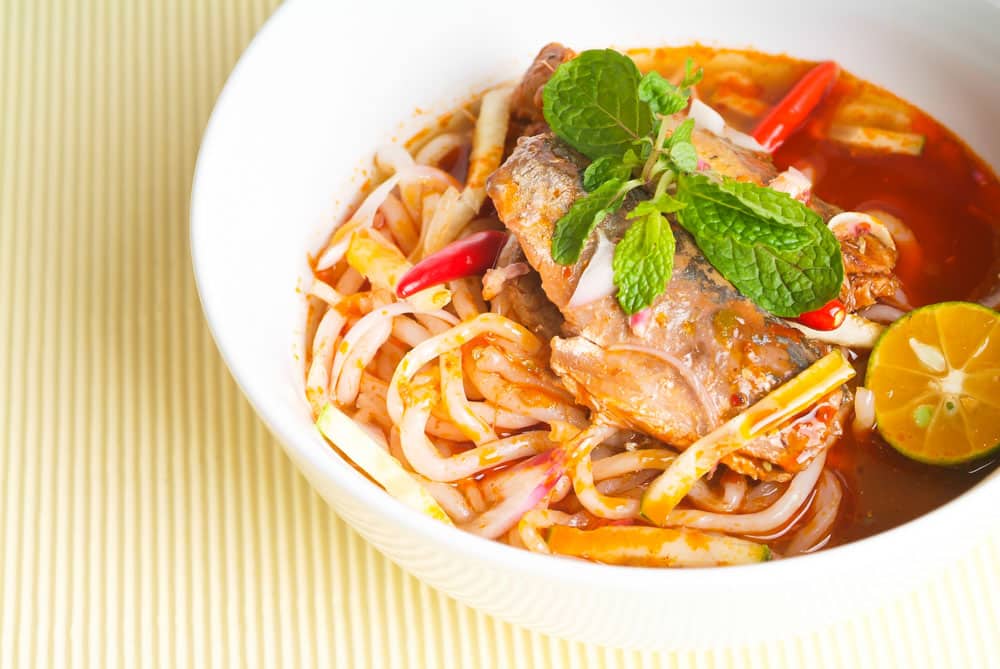
Laksa’s distinctive, creamy broth is prepared using a base of coconut milk, which importantly is mixed with a sour ingredient, which is usually tamarind. Depending on the variety of laksa you’ve ordered, you could find the broth and noodles mixed with prawns, tofu, chicken, bean sprouts, eggs, or any other number of ingredients.
In Malaysia, particularly popular regional variations include Penang laksa (also known as asam laksa), which is prepared with mackerel, tamarind, and fish stock. In Ipoh, laksa is prepared with prawn paste, while Sarawak laksa uses rice noodles, omelets, tofu, chicken, and a whole smorgasbord of Bornean ingredients and spices.
As with most Malay favorites, you’ll want a side of sambal sauce to spice up the laksa, regardless of which regional variety becomes your favorite!
6. Ikan Bakar
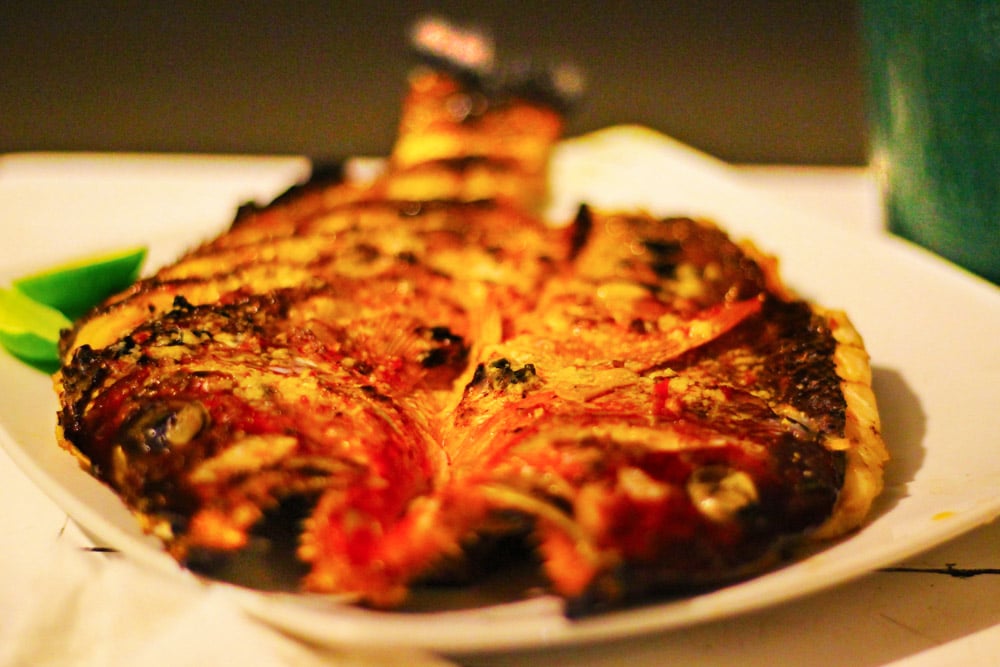
Malays have been barbecuing fish for millennia, and the perfection of this rustic culinary technique has found its apogee in a dish named ikan bakar.
Ikan bakar literally means grilled fish in Malay (and also in Indonesian, where the same style of cooking is also common), and this traditional Malay food involves grilling fresh fish over hot barbecue coals.
But there’s a little more to it than simply poking a fish on a barbecue. First, the fish needs to be marinated, usually in a mixture of soy sauce, garlic, and chili, smothered in more sauces and spices, and then covered in banana leaves before being thrown on the hot coals.
The spiced fish is then grilled until crispy on the outside and served simply with rice and spicy sambal. The fish in question will vary depending on what’s been caught, and we suggest trying ikan bakar when you’re on the coast or living the island life in Penang or Langkawi. Popular types of fish include red snapper, while other types of seafood, like stingrays, are also prepared in the same style.
7. Hokkien Mee
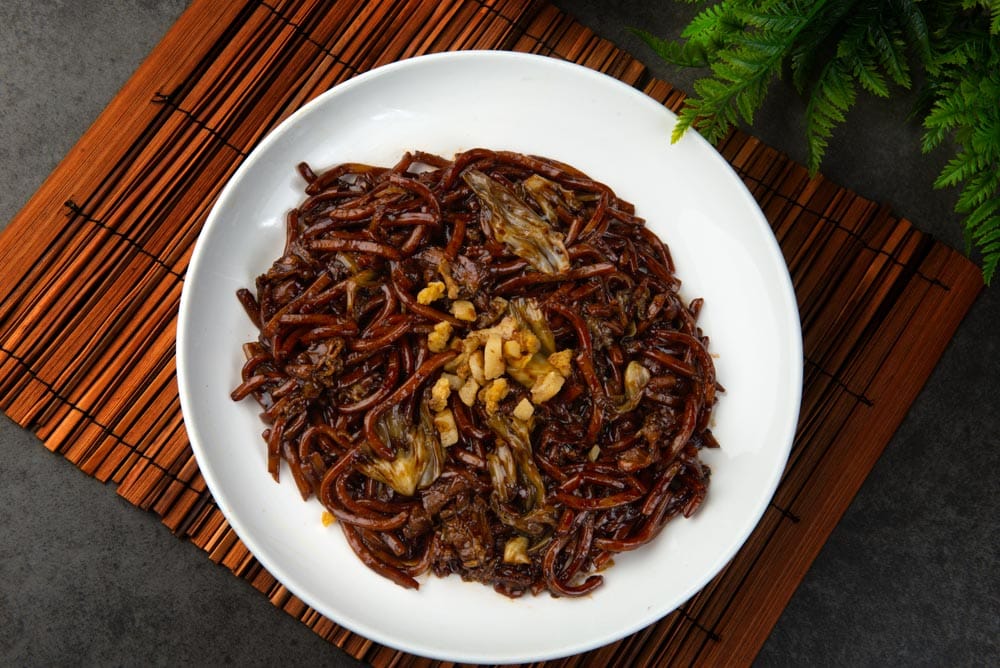
If you love noodles, you’re going to love chowing down on a big bowl of hokkien mee, a very popular Malaysian food. Thought to have been created by Chinese laborers from Fujian province (whose main dialect was Hokkien), there are several regional varieties of this ubiquitous noodle dish found all over Southeast Asia.
In Singapore, hokkien mee is considered a national dish, and many of the best street food stalls serving the dish have even been given Michelin stars in recent years. The Singapore version typically consists of prawns, squid, and pork stir-fried with egg and rice noodles, and given the close ties between the two countries, you’ll find Singapore hokkien mee all over Malaysia.
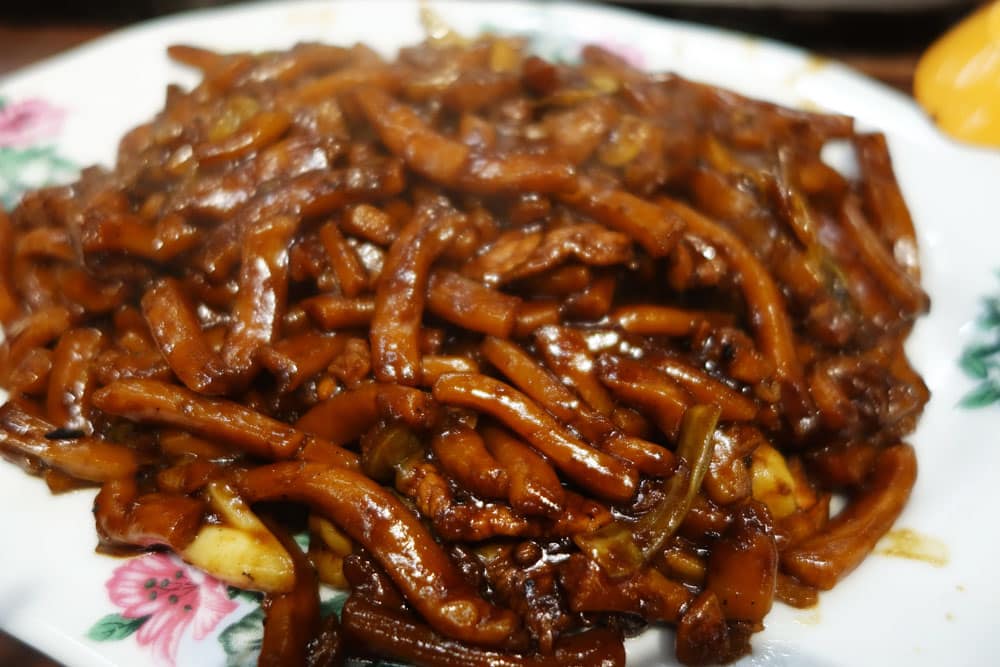
But Malaysia has its own variants, too. In Kuala Lumpur, hokkien char mee is one of the best dishes to try in Chinatown (head to Petaling Street). This variety consists of pork, squid, and cabbage stir-fried in a much heavier, darker soy-based sauce.
Penang hokkien mee is completely different, as it’s served as more of a noodle soup broth than a stir-fry. You’ve still got your egg and rice noodles, but they’re cooked in a thick prawn-based broth with pork, fish, and other toppings.
8. Char Koay Teow
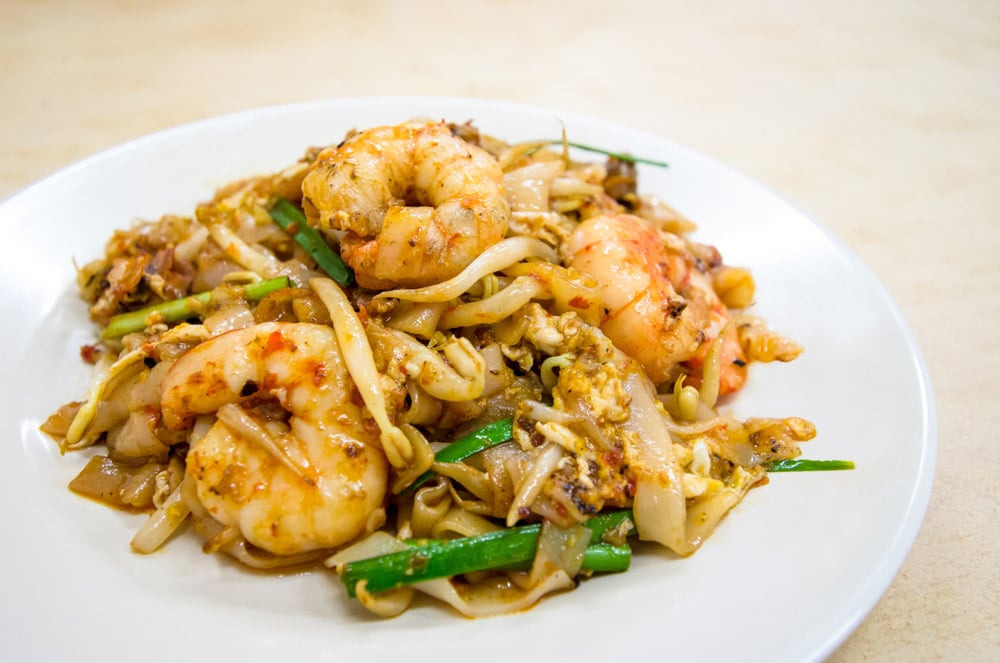
Penang is a foodie paradise, and one of the must-try dishes you’ll find being cooked up in George Town is char koay teow.
Another noodle-based dish of Chinese origins, char koay teow is best ordered from the street food hawkers who cook it up fresh in a wok in front of you.
This stir-fry dish uses flat rice noodles, quickly cooked at high heat with garlic, bean sprouts, and soy sauce, and then finished off with a healthy portion of prawns. As always, char koay teow is best enjoyed with a side of sambal sauce to spice it up!
9. Satay Ayam
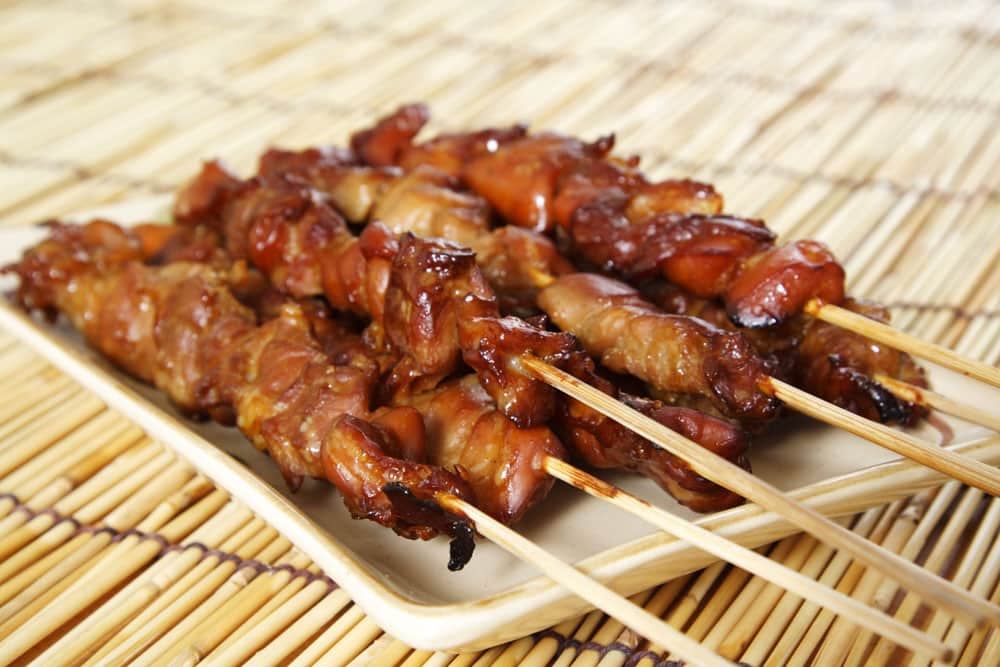
One of the most famous foods in Malaysia, satay is a dish that needs little introduction. Generally cooked up all over Southeast Asia, in Malaysia, the preparation of satay has become an art form.
Satay consists of skewers of meat (generally chicken, which in Malaysian is ayam), which are grilled to perfection over hot coals.
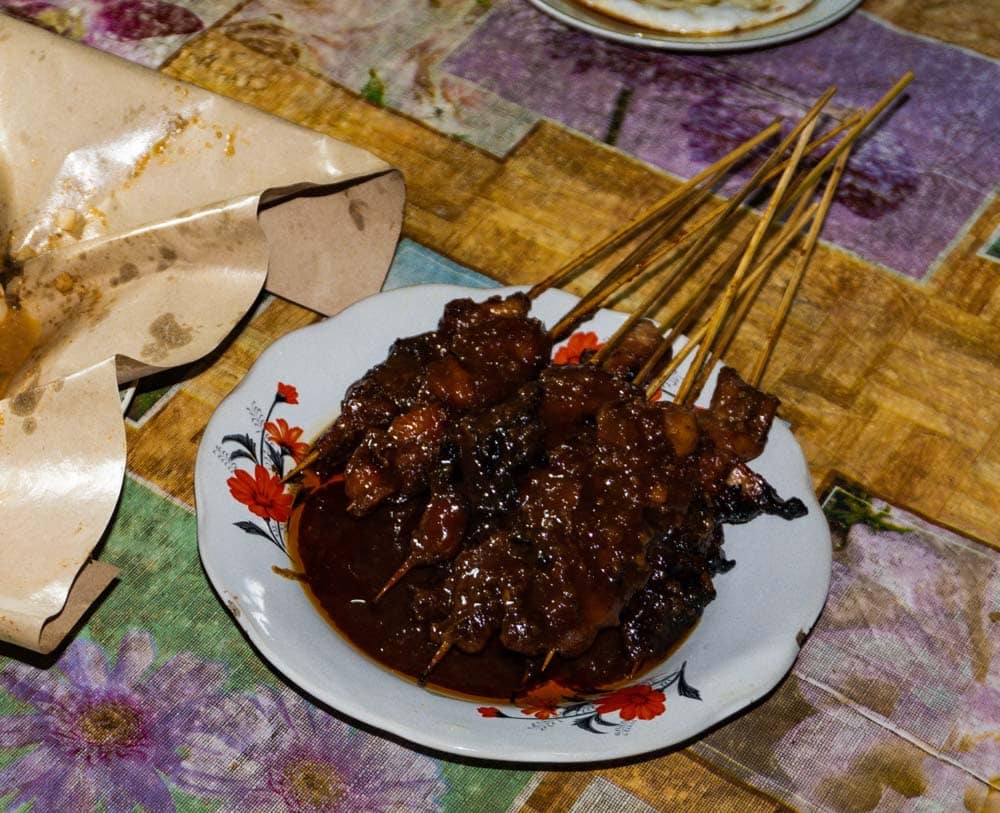
But what really makes this traditional Malay food is the sauce that’s served alongside it. Satay sauce is a peanut-based sauce prepared with soy, tamarind, lemongrass, garlic, chili, and many more spices, and it’s perfect for dipping your skewers into!
10. Curry Mee
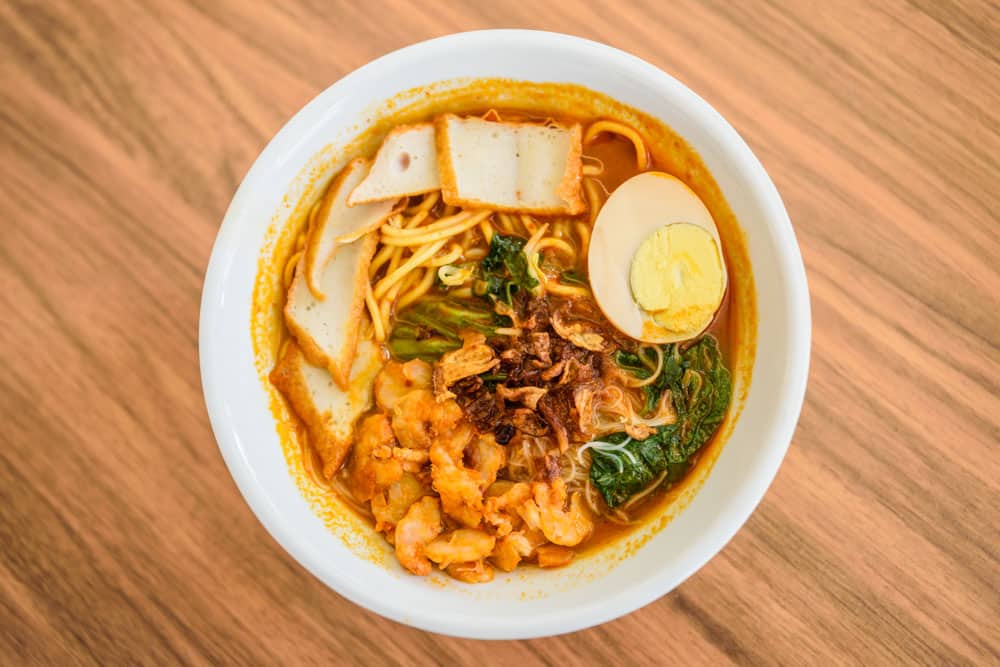
Curry mee is one of the most famous Malaysian dishes. This is one of our personal favorites, combining all the flavors and spices of a good old-fashioned curry with the heartiness of a noodle soup.
The best curry mee is typically found in southern Malaysia, and you can head to Johor (or also cross the border to Singapore) to find the traditional style that we love most. This traditional curry mee is made with a coconut milk base, with curry powder, turmeric, and sambal giving the broth a rich yellow or red coloring. Egg noodles are typically added to the broth, alongside a dash of fish sauce and some more sambal for added spice.
Other ingredients can vary, but you’ll often find chicken, prawns, fish, squid, or tofu added to the broth. You may also have a boiled egg thrown in for good measure. In the south, curry mee is often referred to as curry laksa, but it’s not to be confused with this admittedly similar, coconut milk-based dish.
Curry mee/laksa stands out for the use of curry powder or curry paste, of course. You’ll find regional variants in Ipoh, another great foodie city in central Malaysia, as well as Penang.
11. Nasi Biryani
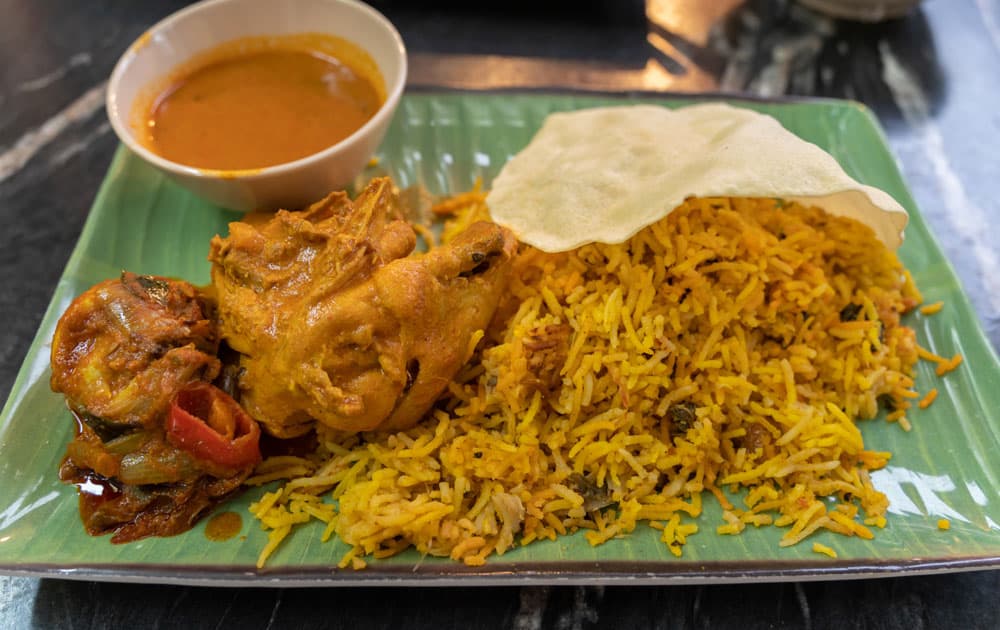
We love Malaysian cuisine because the influences are so outrageously diverse. You can enjoy a traditional Malay breakfast, hokkien noodles for lunch, and then a classic Indian-style meal for dinner. And one of the best Indian-influenced Malaysian dishes is nasi biryani, the local take on biryani.
As you’ll know by now, nasi means rice, but given a biryani is already a rice-based dish, you might be wondering how this version varies from one you might find on the Indian subcontinent or elsewhere in the world.
Indeed, given that biryani was brought here during the British colonial era by Indian immigrants, it hasn’t changed much at all. You can still expect to enjoy a sumptuous plate of rice spiced with curry powders, garlic, turmeric, and other ingredients. You’ll find vegetarian nasi biryani, but more commonly, it’s served with chicken, beef, or lamb.
This is where nasi biryani can vary because the meat is often prepared separately from the rice in a curry sauce, which is then served in a separate bowl or poured over the rice. Either way, it means that nasi biryani has garnered a reputation as a somewhat saucier dish than other types of biryani.
The best nasi biryani is prepared by street hawkers and in Muslim restaurants, with Penang being particularly renowned for this iconic Malaysian food.
12. Hainanese Chicken Rice
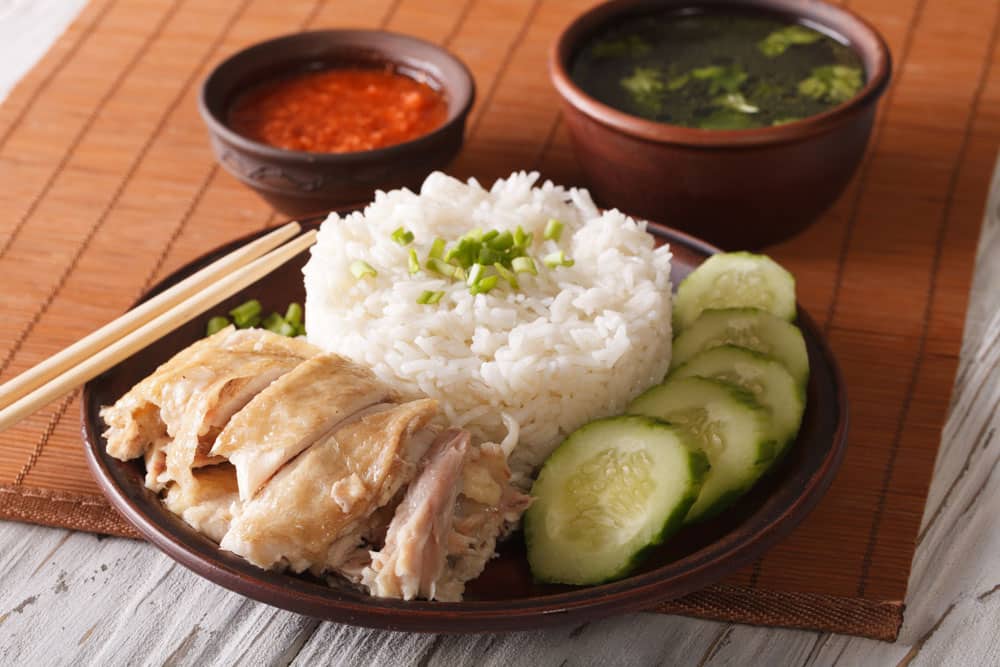
Another tasty Malaysian dish that’s deeply rooted in Chinese communities is Hainanese chicken rice, which is, of course, influenced by the culinary techniques brought over from Hainan province in China.
You’ll recognize the Hainanese chicken rice restaurants by the chickens hanging in the windows. The dish itself is remarkably simple, consisting entirely of a plate of rice topped with chicken.
The chicken is first poached in a chicken broth, giving it a seriously succulent texture. The chef then chops the poached chicken into small strips before serving the dish with sauces like soy or sambal over a plate of fresh rice.
13. Popiah
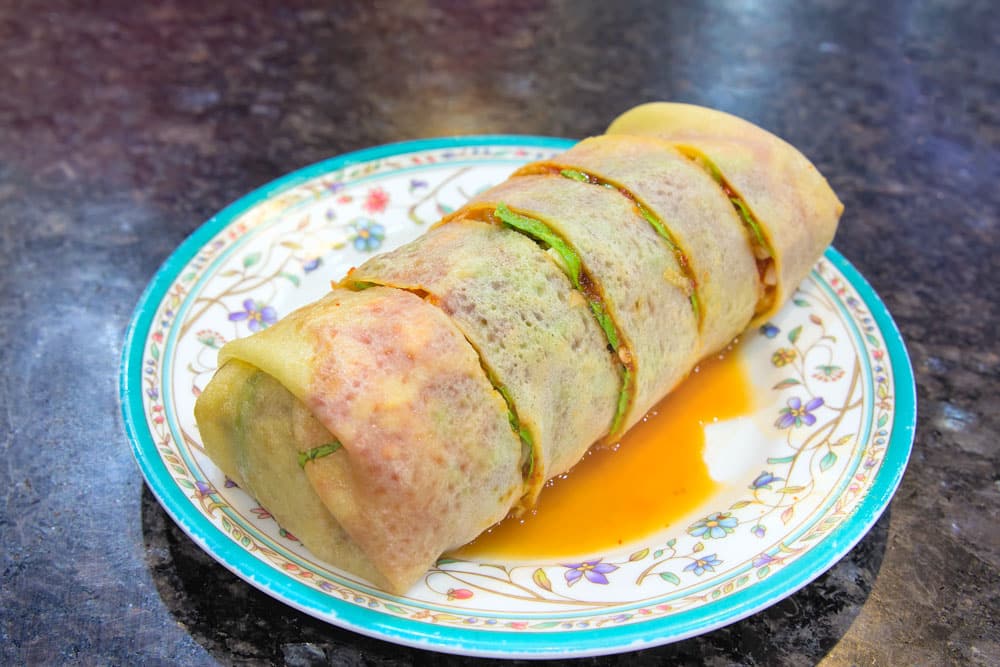
The Chinese influences in Malaysian cooking are ever-present, but few Malaysian dishes evoke such a Chinese feel as popiah. This is the Malaysian take on spring rolls, a dish you’ll find in Chinese restaurants all over the world.
Popiah is prepared with a distinctive Malaysian flair. The concept is the same as any spring roll, and you’ll have the fillings wrapped up in a paper-thin outer layer and a sauce to dip the rolls in. The spring roll casing here is incredibly light and fresh, with it typically being prepared from a light wheat dough.
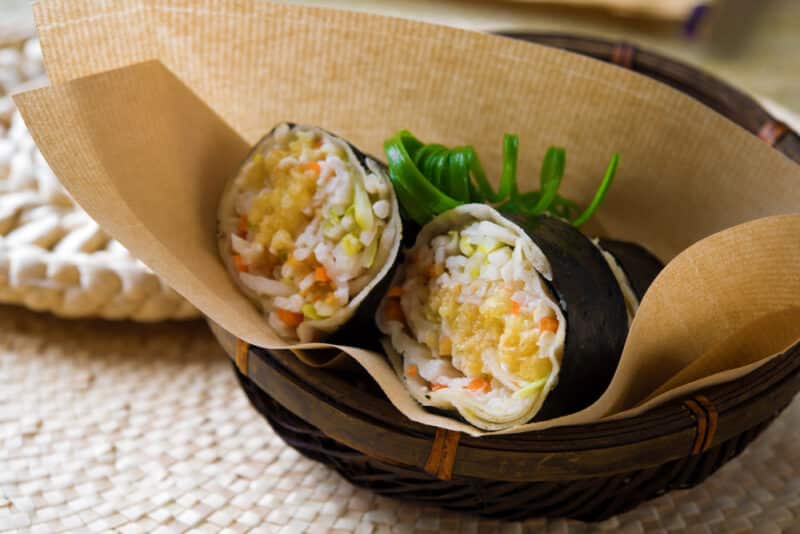
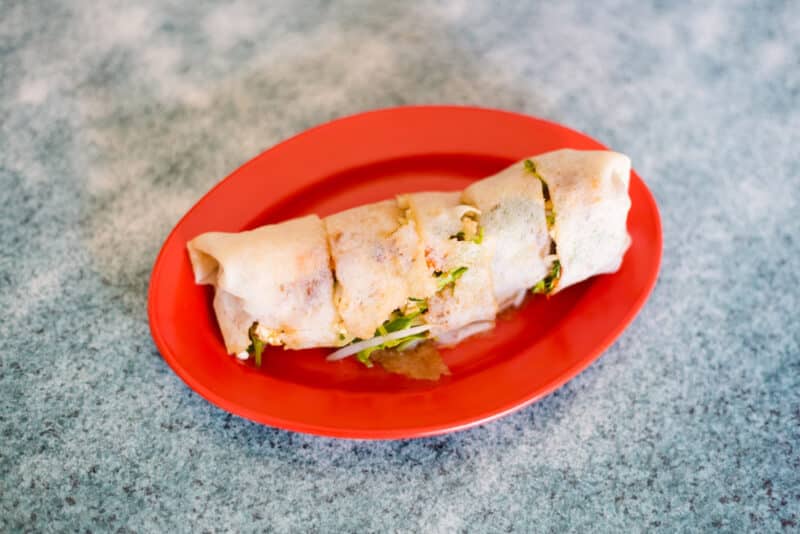
The fillings are heavy on vegetables, which is perfect for vegetarians. Grated carrots and cabbage are ubiquitous, while bean sprouts are a delightful addition. You may find popiah are also stuffed with minced meats like chicken or pork, or one our favorites, shrimp.
Popiah can be served either “raw” – without cooking the casing, for a super fresh snack – or fried in oil for a less healthy snack. Once served, you’ll want to dip your popiah in fish sauce, soy sauce, or a little bit of spicy sambal to really embrace the Malay way!
14. Teh Tarik
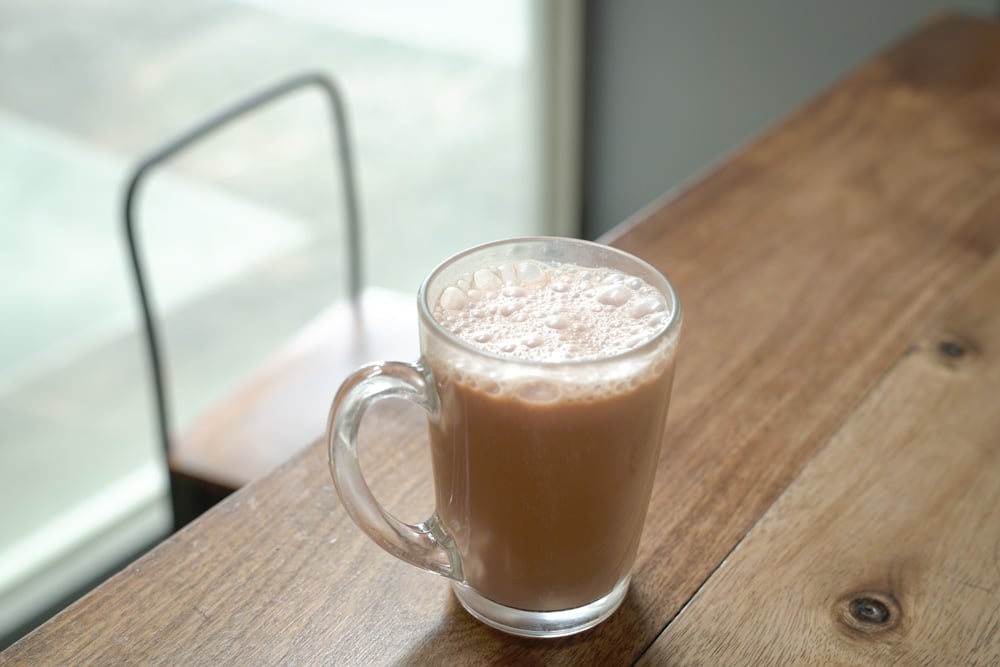
If you need a pick-me-up, there’s no better treat than a hot mug of teh tarik. Warming in winter (not that Malaysia gets too cold!) and revitalizing in summer, many would consider teh tarik to be the national drink of Malaysia.
Teh tarik means “pulled tea,” and you’ll love the sweet, milky, and frothy texture of this delectable beverage. Teh tarik is prepared using a base of black tea leaves and copious amounts of sugar before the milk is mixed in a rather unique way.
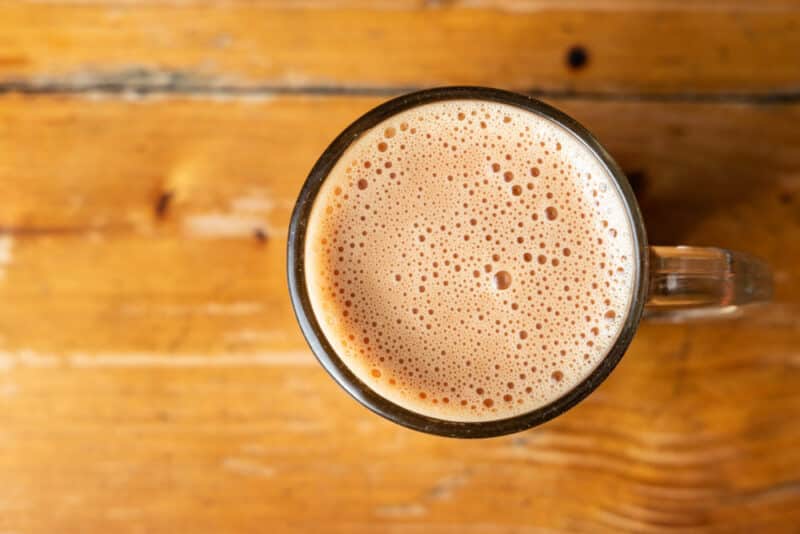
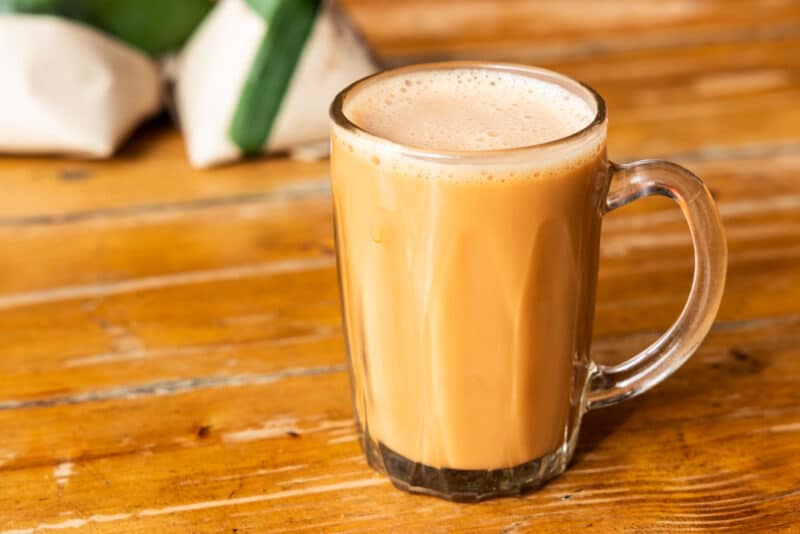
The term “tarik,” or pulled in Malay, is used to describe the way the tea and milk are poured, or pulled, between multiple vessels before being served. The best tea stalls often do this “pulling” at great heights, a method which not only adds to the frothiness of the tea but slightly cools the drink before consumption (which, in Malaysia, is just what you need).
Teh tarik has its origins among the Indian communities that emigrated to Malaysia during the British colonial era, and as such, it’s traditionally served at breakfast alongside other Indian-Malay staples like roti canai.
15. Cendol
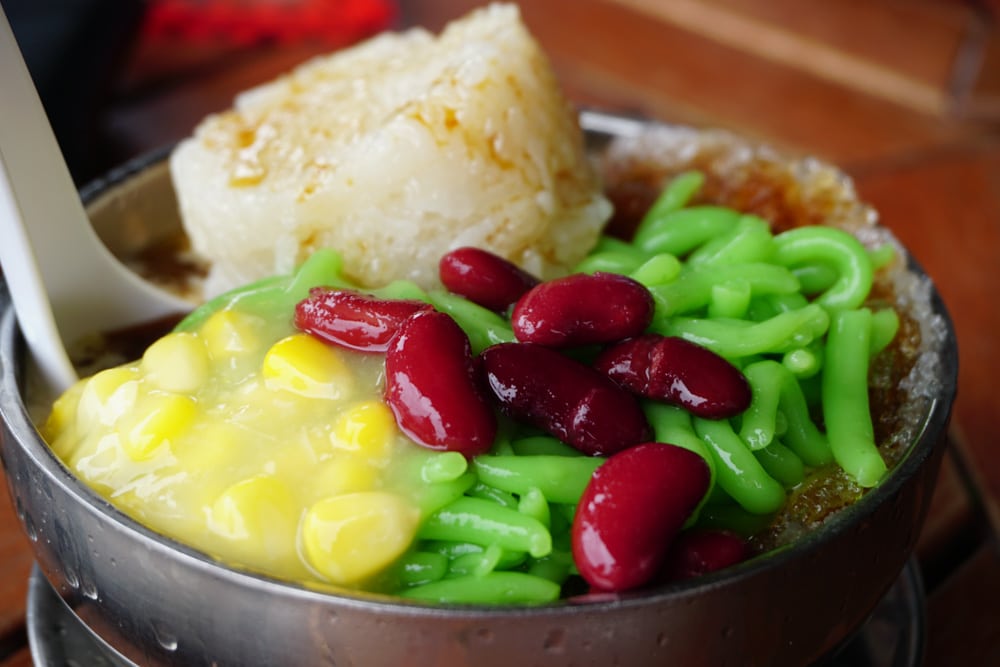
Looking for an ice-cold dessert? You’ll want to order cendol, a Malaysian food favorite that’s as sweet as it is icy.
Cendol is prepared using a base of coconut milk and ice shavings. But from there, things can get very creative. An authentic cendol is supposed to contain jelly noodles, often dyed a garish shade of green or blue using food colorings, before being sweetened with unhealthy quantities of palm sugar.
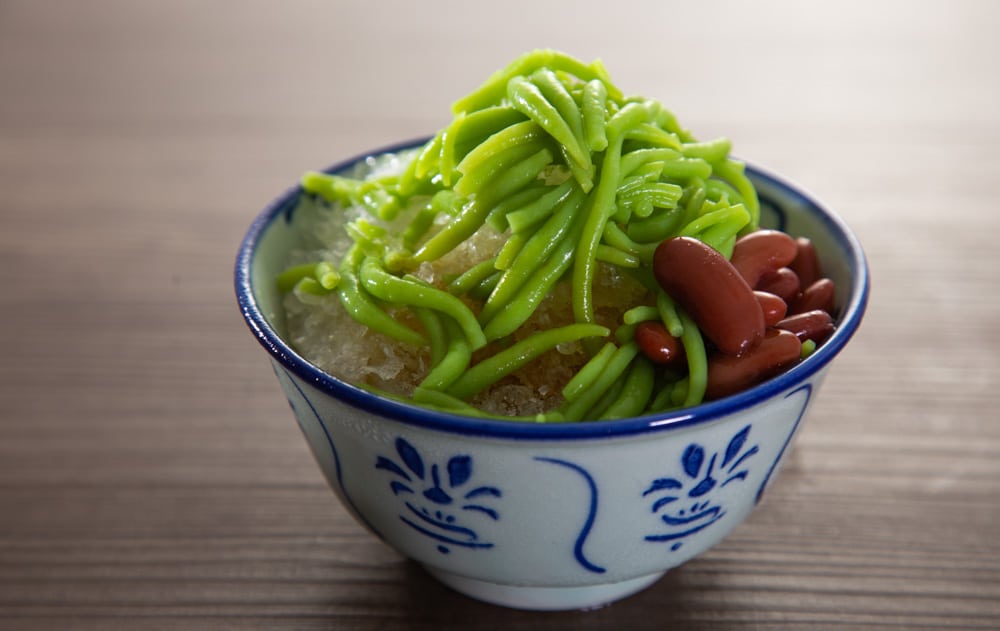
But cendol can also contain any number of sweet or jelly-like ingredients, and each vendor typically has a selection of treats to sweeten up your dessert further. In Malaysia, it’s common for cendol to be served with savory ingredients, too, including red beans and durian (the durian being an acquired taste!).
Cendol can be served in a tall glass, almost like an iced drink, or it can be served more like a traditional dessert in a large, rounded bowl. With cendol, anything goes really, and you’ll find the best are often prepared ad hoc by cendol sellers running street food stalls. It’s perfect for those hot Malaysian days, which are most days of the year!
There you have it! The 15 top Malaysian dishes you need to try! What’s your favorite Malaysian food?
Planning a trip to Malaysia? Check out our favorite books and travel guides!
SHARE THIS ON PINTEREST
